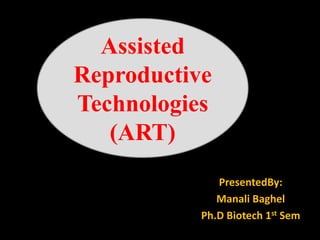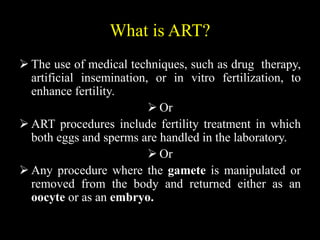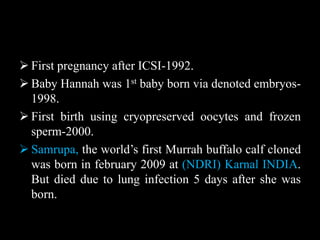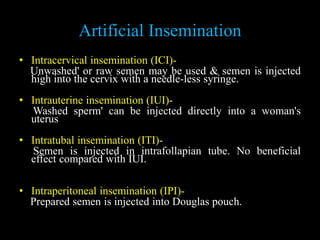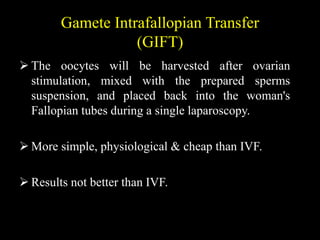ART involves medical techniques like drug therapy, artificial insemination, and IVF to treat infertility. Key ART procedures include IUI, IVF, ICSI, and surrogacy. The first successful human IVF resulted in Louise Brown's birth in 1978. While ART has helped many conceive, it also presents risks like multiple births, infection, and complications for mother and baby. Ongoing research aims to improve outcomes and access to these important infertility treatments.
